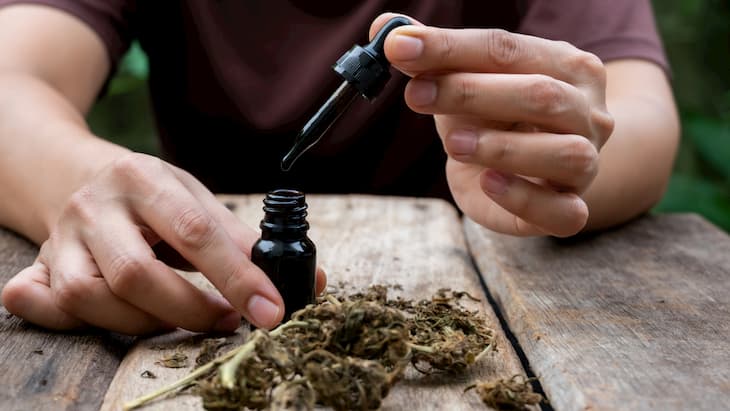
Popularly known as RSO oil, Rick Simpson Oil, developed by medical marijuana activist Rick Simpson, is a cannabis oil product. The significant difference between other available cannabis-based oil and RSO is the THC content.
RSO has higher THC content and doesn’t necessarily need to be purchased but can be made by the user at home. The oil can be consumed orally or applied physically. The oil is made utilizing a solvent to extract cannabinoids.
How to make RSO Oil
The cannabinoids flower (bud) is placed in an enormous container, and alcohol is added to the container; the alcohol acts as the solvent. The most common solvent used is grain alcohol. However, one can also use other solvents like ethanol or butane.
The bud is crushed in alcohol and stirred continuously for a while. The alcohol then needs to be drained from the mixture, leaving behind the remaining plant material. After removing the alcohol, the remaining product is heated in a small container, like a rice cooker, to evaporate the residual alcohol in the mixture.
The end product after alcohol evaporation is an often dark-colored oil, high in potency and thick consistency. The end product, i.e., RSO, can be transferred into a syringe-like product that can be used as needed, stored oil dosed using a syringe style applicator. It is essential to store the oil correctly to avoid oxidation and increase the overall shelf life of the oil.
Is the does harmful?
The RSO regime directs that a dose of 60 grams of oil should be used in 90 days. The dose should be small and taken once a day during the first week, morning, noon, and evening. After that, the doses are doubled every four days and should take between three to five weeks to reach 1 gram of RSO in a day. It is essential to be mindful of the dose, as the body takes time to get used to the THC properties of the oil.
Typically, one syringe of the oil contains around 600 mg of THC; however, this also depends on the source of the material used. Ideally, the oil is made from the Indica plants high in THC, but any strain of cannabinoids can be used. The final result and efficacy of the oil depend on the strain, so does the oil’s color and consistency.
The most common side effects are excessive tiredness and psychoactivity, and both these effects reduce as time passes from the dose. As one continues with the dose, the body gets used to the effects of the oil and can manage better.
As long as one manages the dose and allows the body to get used to the minor and unharmful effects of the oil, the oil doesn’t cause any damage.
Is the oil safe?
The central ingredient of the oil is cannabinoids. Cannabinoids have been used for their medicinal properties for a long time. Much research has been conducted to treat illnesses such as body aches, headaches, inflammation, migraines, etc.
Research conducted on mice for lung cancer in 1975 also suggested that cannabinoids helped slow down the growth of cancer cells. Research and user feedback have also suggested that the product helps cancer patients deal with pain and discomfort from chemotherapy and other cancer treatments.
There also exists a cannabinoid-based prescription which the Food and Drug Administration has approved, called Epidiolex. The prescription can be used for treating two types of epilepsy.
A CBD-based oil’s significant side effects are dry mouth, diarrhea, reduced appetite, drowsiness, and fatigue. In addition, there are minor risks that the oil can interact with other medications, such as blood thinners, so it is advisable to contact your doctor and use the oil in consultation if you are on medications.
One major cause of concern with the use of CBD oil is unreliability and purity of dosage. However, this concern doesn’t apply to RSO as one can make the product and thus ensure that the oil bud and solvent used are good quality and safe.
While there is a long way to go for conclusive research on the efficacy of cannabinoids and RSO to treat cancer, the side effects are mostly short-lived. Its ability to alleviate general pain symptoms and the painful effects of cancer treatment turns out to be more advantageous than the side effects.


